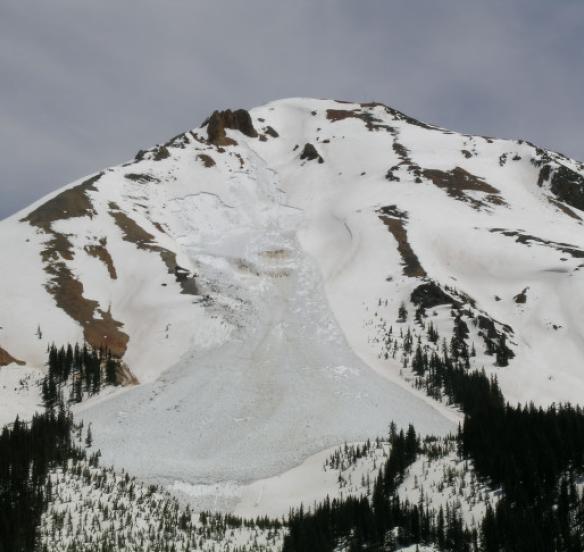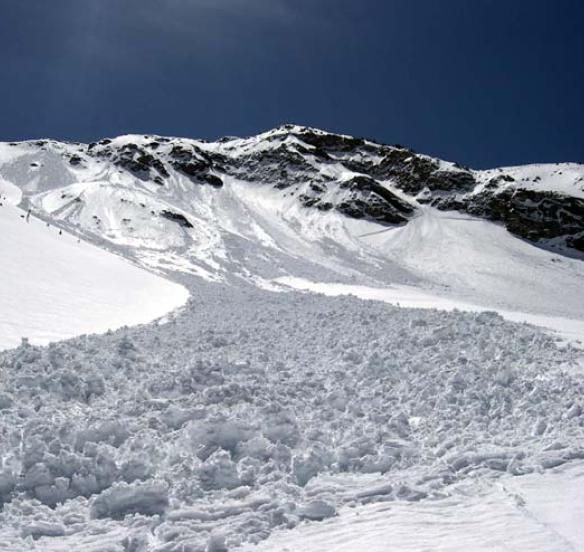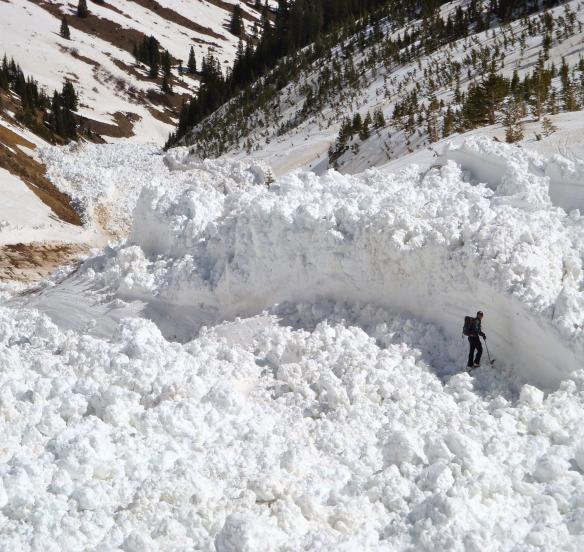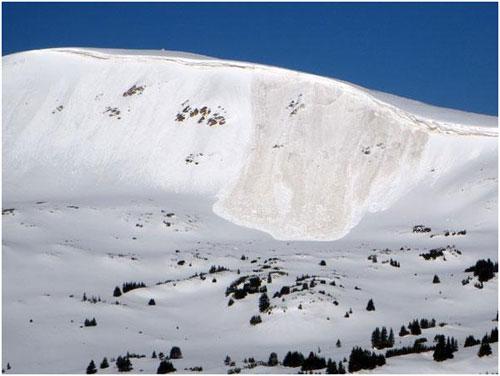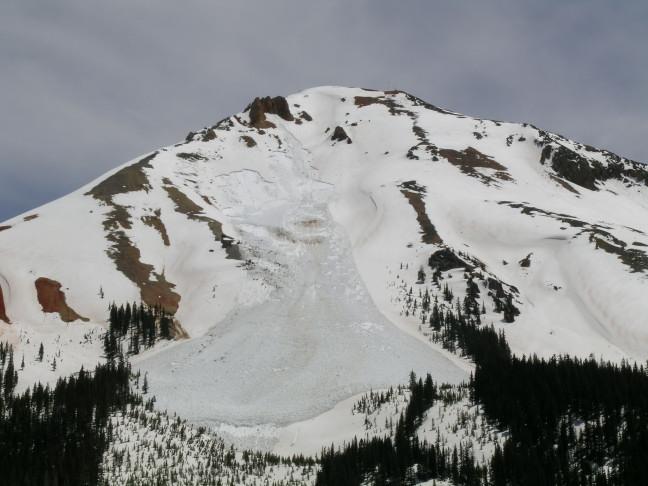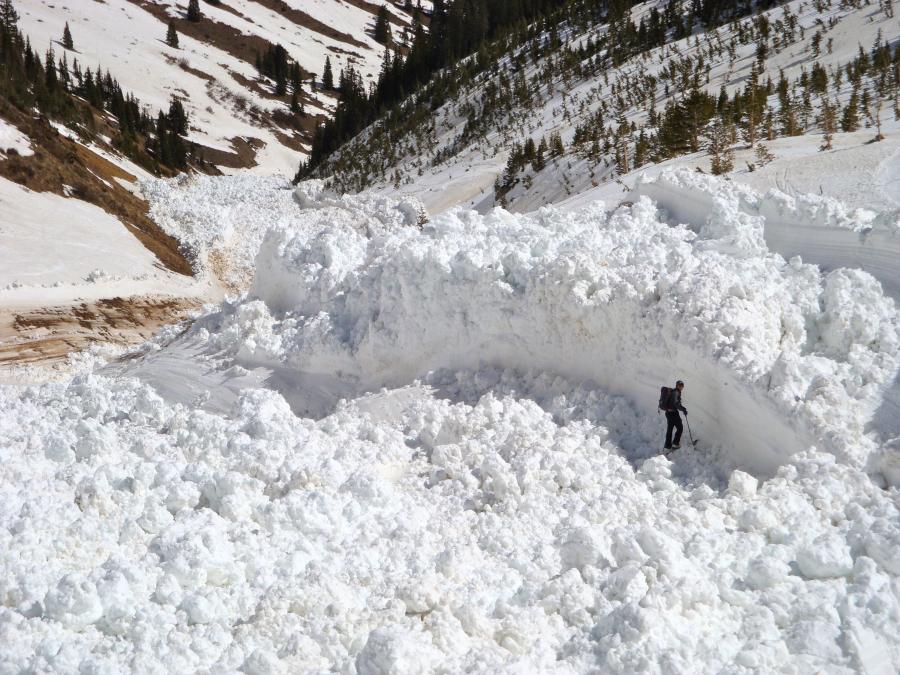Wet Slab
Release of a cohesive layer of snow (a slab) that is generally moist or wet when the flow of liquid water weakens the bond between the slab and the surface below (snow or ground). They often occur during prolonged warming events and/or rain-on-snow events. Wet Slabs can be very destructive.
Avoid terrain where and when you suspect Wet Slab avalanche activity. Give yourself a wide safety buffer to handle the uncertainty.
Read about Wet Slab in “Decision Making in Avalanche Terrain: a fieldbook for winter backcountry users”.
How They Form
Liquid water, from snowmelt or rain-on-snow, moves through the layers of the snowpack at different rates. Wet Slab avalanches happen when a weak layer or interface becomes moist, wet, or saturated. The wet snow loses strength and the snow above fails and avalanches. Wet Slabs fail because of a decrease in layer strength, compared to dry avalanches which often fail because of an increase in load.
Where They Are
Wet Slabs often occur first at lower elevations and areas with a shallower snowpack. Facets and depth hoar layers are especially weak when wetted. After several nights of above-freezing temperatures, wet slabs can occur in many aspects.
Timing
In most climates, Wet Slabs are spring-time events. This is when temperatures are warm and snowmelt produces sufficient free water to lubricate the snowpack. Earlier in the spring, the avalanche pattern can be cyclical, occurring in the afternoon or evening hours as melt-water accumulates, and decreasing in the morning as the snowpack cools. Later in the spring, extended periods of above-freezing weather contribute to the problem. The cyclical pattern decreases and it is possible for wet slab activity to occur at any time. In Colorado, one of the indicators of Wet Slab avalanches is two or three nights where temperatures do not drop below freezing.
Recognition
Snowballing, pinwheels and small Wet Slabs indicate the potential for larger Wet Slabs. Recent Wet Slab avalanches indicate the type of terrain another cycle will occur on if similar conditions recur. Temperature data from remote weather stations can be useful to monitor overnight temperatures and watch for periods of little or no overnight freeze.
Treatment and Avoidance
In many cases, snow conditions are poor when Wet Slabs are a significant problem. Most people leave the mountains or find places with firmer, less slushy snow and away from the slopes where Wet Slabs are a problem. Recognizing the weather factors that lead to Wet Slabs will help you avoid them. When solar radiation is a primary factor, carefully selecting and moving aspects through the day can be effective. Avoid terrain where and when you suspect Wet Slab avalanches. Give yourself a wide safety buffer to handle the uncertainty.


